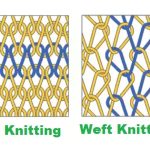Do you know, how to improve color fastness to light? Colorfastness to light refers to a dyed fabric’s ability to resist fading when exposed to light. Light fastness is evaluated by Blue Scales.
The resistance to sunlight depends on the following:
- The intensity of light
- Inherent properties of the fabric
- Season
- Altitude
- Distance from the equator
How to Improve Color Fastness to Light
Through research and practice, it is found that: Selecting the dye with good light fastness is the key to improving the colorfastness to light of textiles.
The colorfastness to light of textiles is mainly dependent on the chemical structure, the aggregation state, the combined state, and the mixture of the dye. Now we analyze how to improve the colorfastness to light from the dyes.
Select the Dye According to Fiber Properties and Textile Uses
- For the cellulose fiber textile, we should select the dye with better oxidation resistance.
- The protein fiber, we should select the dye with a good anti-reducing property or a weakly oxidizing additive.
- For the other fibers, select the dyes according to the effect on fading.
Select the Dyes According to the Color Depth
The color fastness of reactive dye on cellulose fiber is proportional to the depth of the color dyed, that is to say, the darker the color is, and the better the light color fastness is.
For example, when dyeing light-color varieties, we should select the dye with stable lightfastness. In addition, the addition of many finishing agents, such as softener and anti-wrinkle finishing agents, will also reduce the light fastness of the product.
These fabrics should choose dyes that are not sensitive to finishing agents.
How Color Fastness to light can be improved?
Select the Dyes with Good Light-resistant Stability and Compatibility for Color Combination
The fading properties of different dyes are different, and even the principle of photo fading is different. Sometimes, the presence of one dye sensitizes the fading of another dye.
When the color is a combination, we should choose dyes that will not sensitize each other, or even improve the light stability, which is particularly important when dyeing dark varieties such as black.
If one of the three primary colors disappears too quickly, it will soon cause the dyed fiber or fabric to change color, and the faded dye residue will also affect the light stability of the other two dyes.
Reasonably control the dyeing process, make the dye combine with the fiber fully, and avoid the residue of hydrolyzed dye and unfixed dye on the fiber as far as possible.
This is an important method to achieve a stable colorfastness to light.





